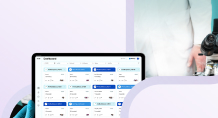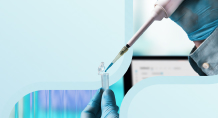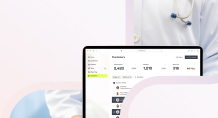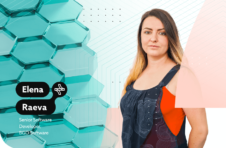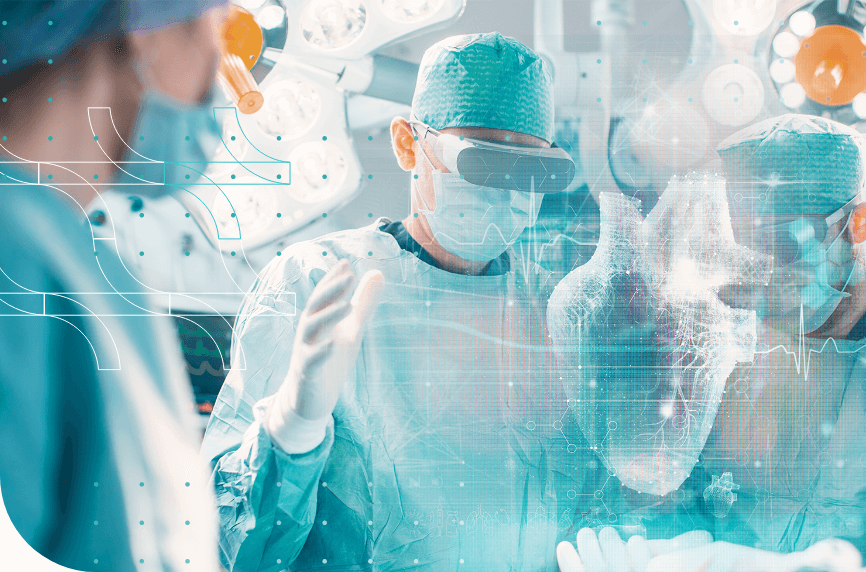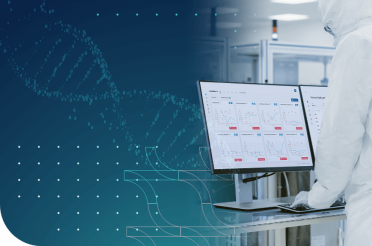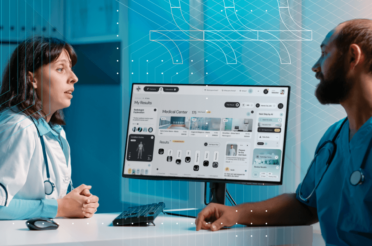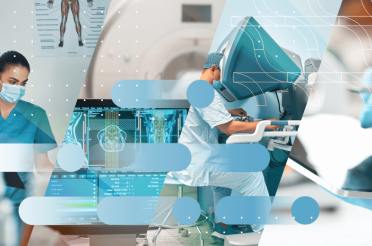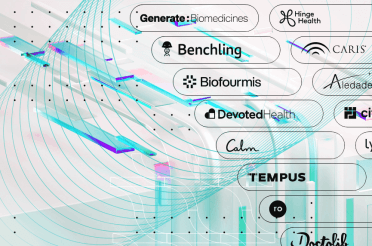The global XR and VR market has reached $142.39 billion in 2024 and is expected to grow at a CAGR of 32.9% from 2024 to 2030, according to Grand View Research. [1] This surge reflects the transformative potential of XR technologies across industries and healthcare stands as a prominent area of adoption.
Healthcare providers and professionals can truly redefine patient care through the introduction of XR into healthcare. This technology can streamline medical procedures and redefine the learning experience for medical education.
XR solutions are even unlocking new opportunities for better surgical outcomes. They can lead to improved diagnostic accuracy and even more effective patient engagement. All of this is propelling the healthcare sector into a new innovative era.
This article explores the transformative role of XR in healthcare, defining what XR is, examining its applications, and considering potential future advancements.
Distinguishing between XR, VR, AR, and MR
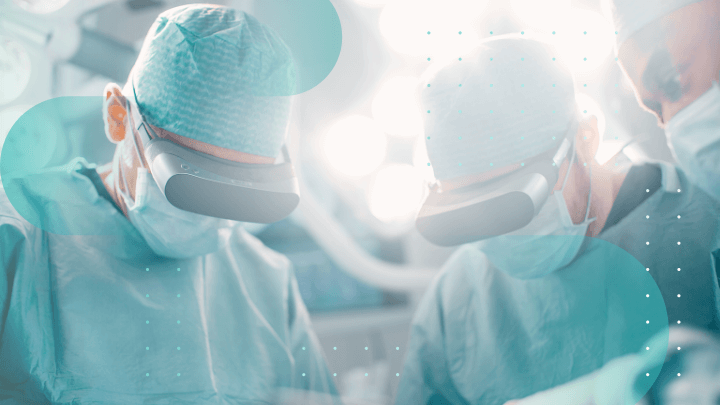
Those are many “R”s. To truly appreciate XR’s influence on healthcare, it’s crucial to differentiate between extended reality (XR) and its subsets: virtual reality (VR), augmented reality and mixed realities (AR) and (MR).
Each of these technologies contributes in a unique way to the creation of immersive healthcare solutions:
- Extended Reality XR: XR serves as an overarching term encompassing VR, AR, and MR technologies. It refers to tools that blend real and digital environments to enhance or transform human experiences.
- Virtual Reality VR: VR immerses users in a fully digital world. They can interact with simulated environments using VR head mounted displays with controllers or hand-tracking devices, often detached from real-world surroundings. VR technology in healthcare can support medical training, pain management or even therapy. All of that – through highly interactive virtual environments.
- Augmented Reality AR: AR overlays digital information, such as 3D models or videos, onto the real environment. This technology enhances a user’s perception without fully replacing the real world. A use case for AR-enabled devices is healthcare providers utilizing devices like smartphones or smart glasses for procedures or patient education.
- Mixed Reality MR: MR combines elements of AR and VR. It allows virtual objects to interact with the physical environment in real time. With MR, surgeons can visualize holographic images of human anatomy, interact with them, and seamlessly integrate these digital layers into real-world procedures. Devices like Microsoft HoloLens are flagship leaders in medical procedures and training through MR’s capabilities.
Together, these technologies form the foundation of XR in healthcare. They offer unseen-before solutions that bridge physical and digital realms to empower healthcare professionals and care providers.
Benefits of XR in healthcare
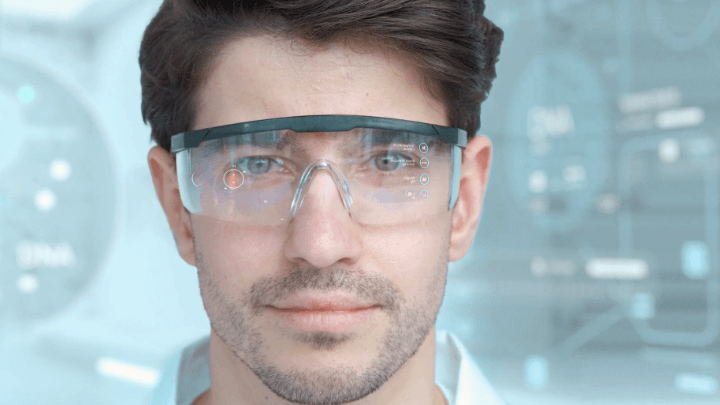
Let us dive into what exactly XR promises. The benefits are many and bound to impress even those relatively experienced with the tech.
Enhancing patient outcomes
Extended reality technologies hold immense promise for improving patient outcomes in many unexpected ways.
They offer immersive, interactive solutions that truly change the way patients and doctors interact for the better. They leverage their capabilities to create new immersive solutions to old problems.
Pain management
XR emerged as a groundbreaking tool in pain management. VR and other XR technologies create immersive environments that are able to distract patients from discomfort during medical procedures or recovery.
For instance, at St George’s Hospital in London, patients undergoing surgery with regional anaesthesia used VR headsets to escape into calming virtual worlds.
The results were remarkable: 94% of participants reported feeling more at ease, and 80% experienced reduced pain. The patients were so engrossed in the virtual world that they were often unaware of being in the operating room.
Physical therapy and rehabilitation
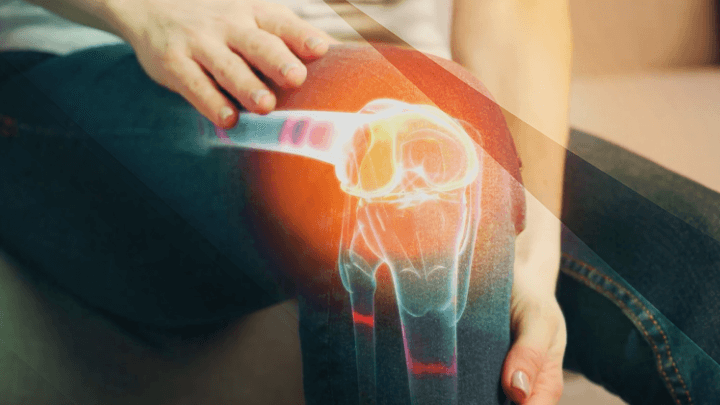
Imagine a world where physical therapy and rehabilitation become immersive, engaging, and even enjoyable experiences for patients. Welcome to the captivating realm of extended reality in physical therapy and rehabilitation
The integration of XR technologies into physical therapy has the potential to outpace all traditional rehabilitation methods. XR can encourage patients to practice movements and exercises in a safe and controlled setting by immersing them in engaging virtual (or semi-virtual) environments.
To illustrate the possibilities, VR can help stroke survivors regain motor skills, as it can allow them to interact with colorful, virtual scenarios that simulate real-life tasks. This gamified approach to therapy can significantly improve adherence to treatment plans and encourage patients to push their boundaries.
Another example includes a 2019 systematic review and meta-analysis on the effect of VR-based therapy on patients with Parkinson’s disease. It concludes that VR may improve balance and walking abilities in patients with the disease.
XR tech can be tailored to each patient’s body and unique needs and thus prepare personalized therapy sessions that are both effective and enjoyable. Those customizable virtual scenarios help therapists address specific challenges faced by individual patients, which ultimately hastens the time patients need to reach their rehabilitation goals.
Mental health
Fortunately, society has become increasingly aware of mental health. In response, the healthcare market has adopted extended, augmented, and mixed realities to help patients with challenges that traditional therapy may not fully address.
Specific phobias
Individuals with specific phobias, such as fear of flying, heights, or spiders, can benefit from VR-based exposure therapy or similar mental health services. A therapist can gradually expose the patient to virtual scenarios that simulate the feared situation, which can help them confront and eventually overcome their fear.
For example, a person with acrophobia (fear of heights) can experience standing on a virtual balcony or crossing a virtual bridge, gradually increasing the height and complexity of the scenarios as they become more comfortable.
Social anxiety disorder
People with social anxiety disorder can practice social interactions and public speaking in a controlled, virtual environment. Patients can engage in simulated conversations, attend virtual parties, or give presentations in front of virtual audiences – a VR-based exposure therapy.
This can be extremely beneficial, as it allows them to develop coping strategies and build confidence in their communication skills.
Post-traumatic stress disorder (PTSD)
Another use case for XR exposure therapy can be particularly useful in treating veterans and others who have experienced traumatic events.
Patients with PTSD can revisit and process their traumatic experiences under the guidance of a therapist. Military veterans, for instance, can be gradually exposed to virtual combat scenarios, which can help them confront and process those traumatic memories and ultimately, overcome them.
Obsessive-compulsive disorder (OCD)
The case with OCD is similar. XR can expose patients with OCD to situations that provoke their obsessions or compulsions and help them practice cognitive-behavioral strategies to manage their symptoms.
A person with contamination fears can be gradually exposed to virtual environments that simulate dirt or germs, allowing them to confront their fears and reduce their compulsive behaviors.
Medical imaging
Imagine a world where healthcare professionals can easily visualize and interact with medical data like never before. We’re getting closer to making that dream of scientists interacting with data in the room like in a sci-fi movie into a reality. These cutting-edge technologies are set to be a game-changer for diagnostic capabilities and medical education.
We mentioned the HoloLens, but what is it exactly?
This mixed reality device, developed by Microsoft, can create 3D holographic images from CT scans. It allows physicians to explore a patient’s anatomy in an incredibly intuitive way, which obviously can open a whole bunch of new possibilities for understanding and treating various health conditions.
Converting flat 2D images from MRIs or CT scans into 3D models represents a significant leap forward. VR technology can do just this. This innovation both aids in pre operative planning and empowers patients to understand their medical conditions more effectively, which fosters informed decision-making.
Medical education settings and training
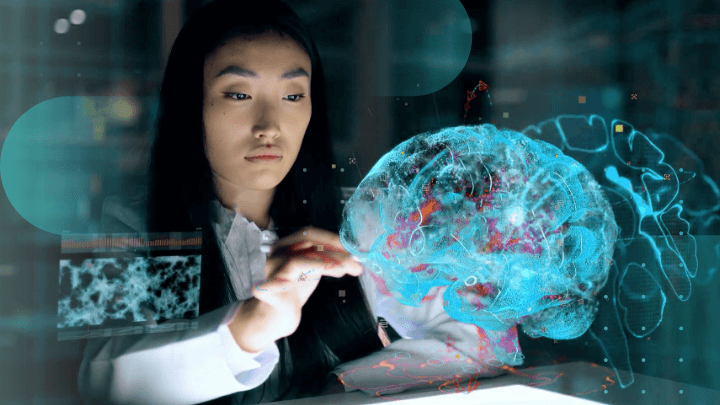
Medical training is undergoing a paradigm shift with the adoption of XR solutions. The new tech provides immersive and interactive learning environments where health care professionals and students can develop critical skills without the need for someone to be ill first.
For instance, VR and AR tools allow trainees to explore human anatomy in 3D, perform surgical simulations or even practice emergency responses in virtual scenarios.
This approach can enhance knowledge retention and foster safer, more efficient skill acquisition without risking patient safety. XR-driven immersive education is becoming more of an integral part in preparing healthcare professionals for real-world challenges every day.
Patient engagement and education
Similarly to medical students, patients also are often in need of education. Soon they will be able to truly understand their anatomy and medical conditions.
Take the “3D Organon Anatomy” app, for example. It uses VR to provide interactive, 3D visualizations of human anatomy. Wouldn’t it be great if we could alleviate patients’ anxiety by clearly explaining medical procedures and treatment plans? “Medical Realities” is a platform which uses VR to help patients grasp surgical procedures by offering immersive, 360-degree videos from the surgeon’s perspective.
Making medical knowledge more transparent and interactive, fosters patient engagement and improves adherence to treatment plans. This focus on education and communication can result in significant advancement in patient care and satisfaction.
Having said all that, XR is bound to change almost everything we currently know about healthcare. The benefits are immense, but they are not a given.

Whether you’re a startup, a Fortune 100 company or a government organisation, our team can deliver a solution that works for you.
BGO Software
Challenges and limitations of XR technology
As promising as XR technologies are in healthcare, they come with their fair share of challenges and limitations. Let’s take a look at some of the hurdles we need to overcome to fully harness the potential of these latest healthcare emerging technologies.
Cost concerns
One of the most significant challenges facing XR technology in healthcare is the high cost of implementation.
Advanced XR devices, such as a VR headset and AR glasses, can be prohibitively expensive for smaller healthcare facilities or developing regions. Additionally, creating customized XR applications for specific medical use cases often requires substantial financial and technical resources, further limiting accessibility.
Developing a virtual reality surgical training program involves both acquiring hardware and also designing realistic 3D models. That is further hampered by the need to program interactive elements and maintain the software.
These expenses create a huge financial barrier that could hinder widespread adoption, particularly in resource-constrained settings.
Technological limitations
Seamlessly integrating XR technologies into existing healthcare workflows is not an easy process.
Hospitals and clinics rely on complex networks of medical devices and electronic health records (EHRs). The compatibility between XR solutions and these systems can present a daunting task which often requires custom integrations.
Moreover, XR applications demand significant computational power, high-speed internet connections, and advanced data storage solutions, all of which are unlikely to be readily available in all healthcare settings.
Deploying and maintaining XR technologies becomes extremely impractical without the needed robust technical infrastructure.
Workflow integration woes
The introduction of XR in healthcare necessitates training for medical professionals to effectively use the tech. The process of learning to operate XR devices and navigate a virtual environment can be challenging, particularly for non-tech-savvy practitioners or ones unfamiliar with such tools.
Surgeons adopting VR-based preoperative planning tools must acquire new skills to interact with 3D anatomical models. This learning curve can slow the adoption of XR technologies and delay their integration into routine practice
Accessibility and usability
Individuals with certain medical conditions, such as severe motion sickness or visual impairments are essentially barred from using this shiny new tech, They may experience discomfort or adverse reactions when using XR devices. VR-induced nausea, also known as cybersickness, is a well-documented issue that affects some users in immersive virtual environments.
Older patients or those unfamiliar with advanced technology are also bound to struggle to engage with XR applications. All those cases essentially limit the technology’s universal appeal.
Data privacy and security
As XR technologies raise more and more ethical and privacy concerns. They often rely on collecting and processing sensitive patient data, such as medical histories or biometric information. Protecting this data from breaches and misuse is paramount.
For instance, a VR rehabilitation program that monitors a patient’s physical movements and responses might inadvertently expose personal health data to unauthorized parties. This is why compliance with stringent data protection regulations, such as GDPR or HIPAA, is of primary importance.
Limited evidence base
Despite promising initial results, there is still limited evidence regarding the long-term effectiveness of many XR-based interventions.
Some studies have shown positive outcomes in areas such as pain management and physical therapy, but more extensive clinical trials are needed to validate these findings and establish standardized best practices.
The best thing about challenges and limitations is that they are there to be overcome. Knowing what problems we are facing means that it is just a matter of time to find solutions or at least mitigate them. This is why we must look to the future of XR and how its application is bound to evolve.
Future developments in XR technology for healthcare
The future of XR technology in healthcare is poised for rapid evolution, with advancements that promise to overcome current limitations and unlock new possibilities. Below are key areas where XR technology is expected to make significant strides:
Improved hardware and software
The evolution of XR technology hinges on advancements in hardware and software.
Future XR devices are expected to become more ergonomic and capable of delivering ultra-high-resolution graphics, which can make the XR experience even more immersive.
Lighter AR glasses with built-in AI processors could allow surgeons to access real-time patient data during procedures without discomfort. Software innovations, including more sophisticated machine learning algorithms, will provide precise simulations and adaptive features tailored to individual healthcare needs.
The evolving healthcare landscape has revealed valuable lessons learned, which have been integrated into digital content designed to deliver focused, patient-centred care. Improvements in motion tracking, haptic feedback, and spatial audio will create richer, more realistic XR environments and expand their potential for medical training and therapeutic interventions.
Greater integration with other technologies
Tech advancements are all about integrations and powerful synergies. Combining XR with artificial intelligence (AI) in the health sector will enable intelligent decision-making in diagnostic tools, while 5G connectivity will facilitate seamless remote XR applications with minimal latency.
Wearable devices, such as smartwatches and biosensors, will feed real-time physiological data into XR systems and create truly dynamic environments that respond to a patient’s condition. This convergence of technologies will make XR more versatile and impactful in healthcare and support applications like continuous patient monitoring and precision medicine.
Personalized experiences
Future XR systems will focus on delivering highly personalized healthcare experiences. XR applications will adapt to individual patient needs and preferences by using insights driven by artificial intelligence.
Virtual therapy programs can adjust difficulty based on a patient’s progress or physiological responses. In rehabilitation, a personalized digital environment can simulate familiar settings to motivate patients and increase engagement. This tailored approach improves treatment effectiveness and enhances patient satisfaction.
Discover all the benefits of VR and XR for your healthcare practice Innovate your healthcare practice and step into the future with immersive VR and XR technology with the guidance of BGO Software’s experts

The proliferation of remote healthcare applications
The ongoing rise of telemedicine will drive the adoption of XR-powered remote healthcare applications. Virtual consultations in fully immersive environments will allow patients and doctors to interact more naturally, regardless of physical location.
For instance, AR tools could enable remote patient monitoring and diagnostics by overlaying vital health data onto a patient’s video feed in real time.
In addition, XR in healthcare enables remote collaboration among medical teams during surgeries or complex procedures. This technology makes expertise accessible worldwide without requiring physical presence.
Expansion of therapeutic applications
The therapeutic potential of XR will continue to grow, with applications expanding into areas like chronic disease rehabilitation. Virtual reality will play a larger role in treating the aforementioned conditions, offering drug-free alternatives to traditional therapies.
AR-guided physical therapy programs will become more interactive and engaging. Advancements in biofeedback mechanisms will enable XR environments to adapt dynamically to a patient’s physiological and emotional states.
Collaborative environments
XR technologies will foster greater collaboration in healthcare by creating shared virtual spaces for medical professionals and patients. XR-powered surgical simulations will allow teams to practice procedures together in real time, regardless of geographic barriers.
Medical conferences and training workshops could shift to immersive XR platforms, which makes it possible for participants to attend virtual lectures and engage in group discussions from anywhere in the world.
Gamification and engagement
Gamification will become a central feature of XR healthcare solutions, particularly in patient rehabilitation and education.
By incorporating game-like elements such as rewards, challenges, and progress tracking, XR systems make treatment regimens more enjoyable and motivating. For example, children undergoing physical therapy can engage in VR games that require specific movements, transforming a traditionally tedious process into an interactive experience.
Ethical considerations and guidelines
Ethical guidelines and regulatory frameworks are bound to evolve to address concerns such as data privacy and equitable access. More and more governments and healthcare organizations will need to establish clear standards to protect patient data and ensure that XR technologies are used responsibly, as the EU and the US have done already.
Healthcare providers must collaborate with a trusted partner to navigate these challenges effectively and responsibly. They can ensure that the XR solutions they adopt are tailored to their unique needs, compliant with healthcare industry standards, and optimized for seamless integration with existing workflows only by working closely with a software development company.
BGO Software, an industry leader, can provide valuable guidance and expertise in managing potential risks, ensuring that healthcare providers harness the full potential of XR technologies to enhance patient care and overall operations.
Sources
[1] https://www.grandviewresearch.com/industry-analysis/extended-reality-xr-market-repor


